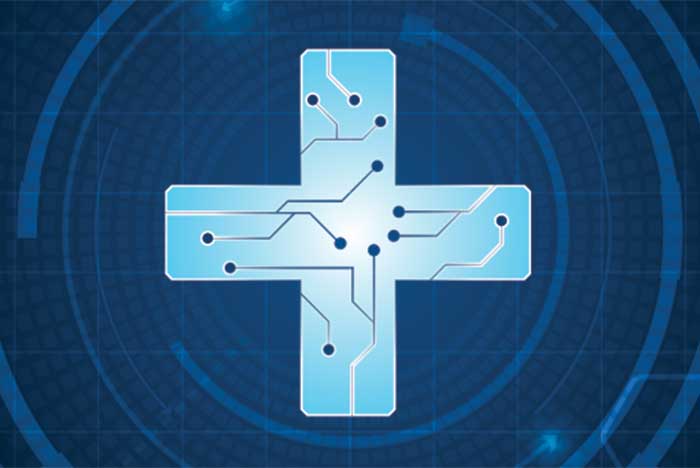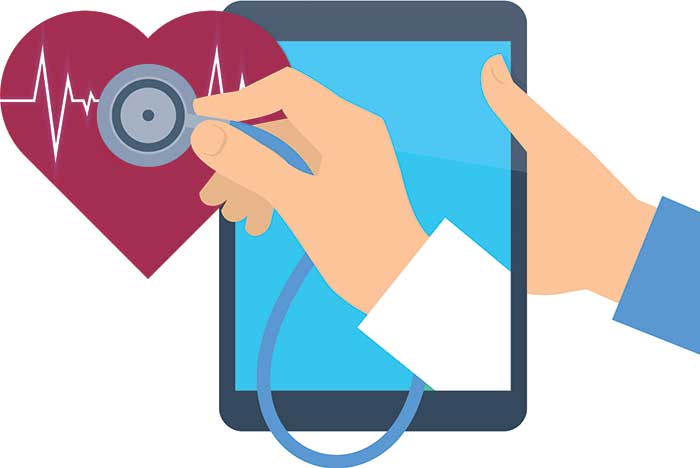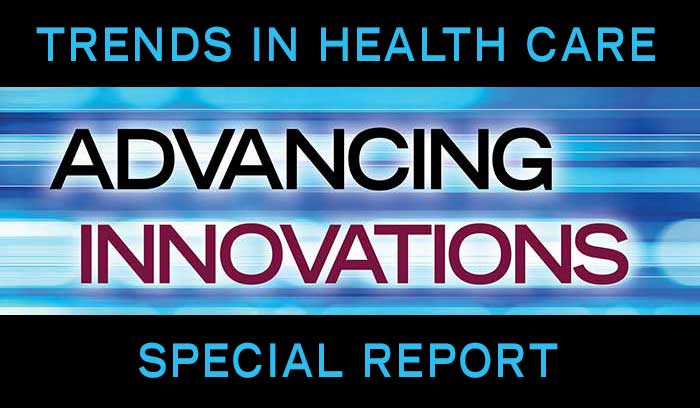Health facilities professionals break beyond traditional walls

Heading into a new presidential administration, managers looking to the future of health care have two words guiding them: patient satisfaction. With patient satisfaction and outcomes increasingly driving the health care field, health facilities professionals are working overtime to find out what patients want — not only for today, but for years down the road.
That mandate is driving innovation in every area of design and construction, environmental services and infection prevention, engineering and technology, and materials management as health facilities professionals work to stay on top — and ahead — of a continually moving target.
“Some hospitals that have been scoring well in patient satisfaction might be in for a surprise in a few years if they aren’t able to anticipate what the patient is going to expect down the road,” says Chad E. Beebe, AIA, CHFM, CFPS, CBO, SASHE, the American Society for Healthcare Engineering (ASHE) deputy executive director of advocacy.
Some hospitals are so dedicated to change that they are creating entire centers devoted to innovation. For example, Intermountain Healthcare in Utah opened a Transformation Lab in 2013 that is shepherding projects including the patient room of the future, 3-D printing applications and sensors to boost hand-hygiene compliance.
Advanced technology is improving the patient experience on every level — from 3-D virtual mock-ups that aid facility designers to software that alerts staff of patient movements to medical equipment that interacts as never before.
Managers also are moving toward systems like enterprise data warehousing, offering sophisticated analytics that help with everything from reducing readmissions to analyzing patient flow to investing in new products. Predictive analytics is allowing hospitals to mine data on an even deeper level.

Hospitals increasingly will turn to remote technology to monitor a patient’s health parameters.
“Analytics is playing a larger role in guiding the product decisions physicians, clinicians and supply chain professionals are making,” says Michael Schiller, CMRP, senior director, supply chain, Association for Healthcare Resource & Materials Management. “The supply chain executive of the future will need to translate analytics into action.”
On the home front
Improving patient care and cutting costs has driven the shift from central hospitals to satellite clinics and offices, emergency departments and retail health care. Largely based on research showing that patients have a better recovery rate in their own environments, hospitals are taking this a step further by moving toward a home health care model, Beebe says.
If adopted, this model will impact everything from future designs to infection control issues and will ensure that technology like telehealth is a must-have for many hospitals.
“Once a patient returns to a home environment, hospital staff need to make sure that the environment is not hazardous, that there is no infection risk,” Beebe says. “It’s a challenge, but this is where technology can play a big role, not only with home monitoring, but in areas like virtual doctor visits. This is the direction health care is headed.”
Hospitals will rely heavily on interoperability solutions to exchange patient information across settings and increasingly will turn to remote technology to monitor a patient’s health parameters, often utilizing iPads or Bluetooth-connected devices.
The move to health care outside hospital walls could inspire other creative solutions. Meredith Hotchkiss, R.N., regional manager, Trinity Hospitality Services West, Boise, Idaho, sees a future in which patients will be able to access an online infection prevention service through existing patient portals at their health care facilities.
“This could be a web-based service for patients on how to disinfect certain items at home,” says Hotchkiss, also co-chair of the Association for the Healthcare Environment advisory council. “Considering the shift toward home health care, this could greatly benefit patients and hospitals.”
Inside hospitals walls, such technologies as ultraviolet light, hydrogen peroxide — vaporized and aerosolized — and self-disinfecting surfaces such as copper and silver hold promise in infection control and prevention, but are still being researched, says Joan Suchomel, AIA, ACHA, EDAC, principal at Eckenhoff Saunders Architects in Chicago, and president of the American Institute of Architects (AIA) Academy of Architecture for Health.
“The goal of achieving infection prevention is driven by science on every level,” she says.

RFID labels help hospitals to improve inventory management and product use capture.
Technological tools
In the push to improve efficiencies and patient care, health care managers are turning more frequently to software and other technological tools to help track and audit data and processes.
On the supply chain end, real-time locating systems allow hospitals to better track and manage their assets, cutting wait times while ensuring medical devices are available for patients.
Another emerging trend, radio-frequency identification (RFID) technology, is aiding health care in a variety of ways, Schiller says. For example, RFID labels help hospitals to improve inventory management and product use capture at the point of care and reduce the time clinicians spend locating products, allowing nurses to spend more time on direct patient care.
On the infection control front, RFID could be used in tracking potentially infected patients to help staff develop patterns of transmission, experts say. It’s also just beginning to be used to track curtain changes to aid in infection prevention, Hotchkiss says.
Hospitals will continue to rely on visual cleaning audits, but more will be turning to electronic tools as an adjunct. For example, bioluminescence systems measure the presence of adenosine triphosphate, a marker for microbial contamination.
At Saint Alphonsus Health System in Boise, Idaho, environmental services supervisors are using iPad tablets to audit staff on their cleaning rounds, tracking whether they are taking necessary steps (i.e., cleaning high-touch objects, changing linen) to properly clean the room, Hotchkiss says.
“It works better if the supervisor does random audits,” she says. “This is pretty new, but the technology is improving all the time.”
Hotchkiss also sees the need for infection control protocols to be adapted to satellite settings as health care moves away from a central location. “Right now, there are 17 high-touch objects recommended by the Centers for Disease Control and Prevention (CDC) that can be adapted to emergency room or ambulatory settings,” she says. “It’s not systemwide and that is something I can see happening in the future.”
Because central hospital sites will be serving more acute care patients for longer lengths of time, ASHE is working to improve infection prevention and control in acute care and long-term hospitals across the U.S., through a collaboration with the CDC and the Health Research & Educational Trust of the American Hospital Association.
The three-year initiative launched in 2015 with the goal of reducing Clostridium difficile, methicillin-resistant Staphylococcus aureus and other infections. ASHE is working to develop resources to help design and redesign hospitals in ways that reduce infection risks.
As hospitals strive to satisfy patients, designers will need to build those expectations into the initial design concept. “When creating designs, we’re looking at factors like wait times, the layout of the exam room — anything that will improve the patient experience,” says Suchomel.
Through virtual 3-D mock-ups, patients, doctors and nurses can virtually walk through a new facility before it is built, experiencing how a space feels in a way that can’t be achieved through architectural floor plans, renderings or animated walk-throughs. And virtual mock-ups are often significantly less costly than physical models, Suchomel says.
“There are many advantages to using this technology, which some of the big firms are doing now,” Suchomel says. “Virtual mock-ups give you a way to see the design in real time at its earliest stages and make changes accordingly. This will become pretty common in the next 10 years.”
Ahead of the curve
While it is unclear how far new technology and big data will take hospitals in the near future, one fact is crystal clear: The role of managers in patient care is going to increase, Beebe says.
For that reason, facilities professionals — who will be more necessary than ever — need to be prepared to step into that role and be ready to evolve with the changes, especially concerning the transition to care outside the main facility, which Beebe says, “could turn health care on its end.”
“A very well-qualified facility manager who understands the critical nature of the facilities systems and what they mean to the patient will be in demand,” Beebe says.
Beebe encourages managers to stay educated on the issues changing the face of health care. One resource is the Center for Health Design’s Knowledge Repository, of which ASHE and the AIA Academy of Architecture for Health are supporters. The website offers the latest research, case studies, key point summaries and tools managers need to stay ahead of the curve.
Beth Burmahl is a freelance health care writer based in Lisle, Ill.





